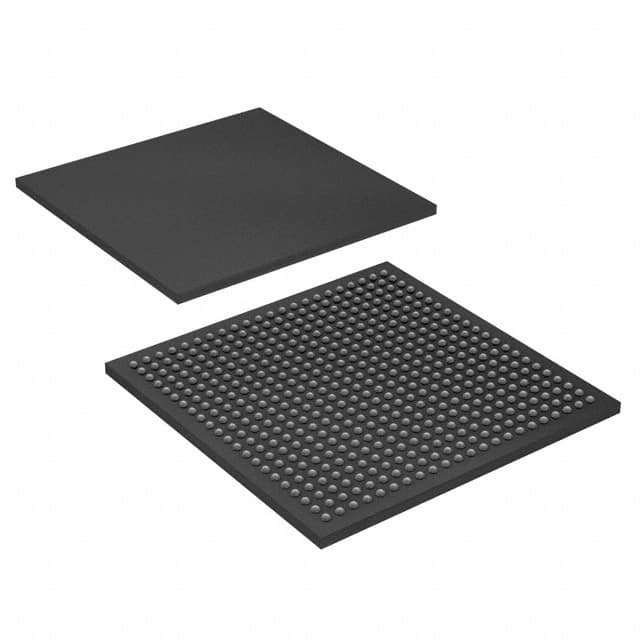Xem thông số kỹ thuật để biết chi tiết sản phẩm.

EP4CE40F23C8LN
Product Overview
Category
EP4CE40F23C8LN belongs to the category of Field-Programmable Gate Arrays (FPGAs).
Use
This FPGA is commonly used in various electronic applications that require high-performance digital logic circuits.
Characteristics
- High-density programmable logic device
- Low power consumption
- Flexible and reconfigurable design
- High-speed data processing capabilities
Package
EP4CE40F23C8LN is available in a compact and durable package, ensuring easy integration into electronic systems.
Essence
The essence of EP4CE40F23C8LN lies in its ability to provide a customizable digital logic solution for complex applications.
Packaging/Quantity
This FPGA is typically packaged individually and is available in various quantities depending on the customer's requirements.
Specifications
- Logic Elements: 39,600
- Memory Bits: 1,518,144
- Embedded Multipliers: 112
- Maximum User I/Os: 346
- Operating Voltage: 1.2V
- Speed Grade: -8
- Package Type: FBGA
- Package Pins: 484
Detailed Pin Configuration
For a detailed pin configuration diagram of EP4CE40F23C8LN, please refer to the manufacturer's datasheet.
Functional Features
- High-speed data processing capabilities
- Configurable logic blocks for custom circuit implementation
- On-chip memory resources for efficient data storage
- Dedicated input/output pins for seamless integration with external devices
- Built-in multipliers for efficient arithmetic operations
Advantages and Disadvantages
Advantages
- Flexibility and reconfigurability allow for quick prototyping and design iterations.
- High-density logic elements enable the implementation of complex digital circuits.
- Low power consumption makes it suitable for battery-powered applications.
- Availability of on-chip memory resources reduces the need for external memory components.
Disadvantages
- Limited number of user I/O pins may restrict connectivity options in certain applications.
- Steep learning curve for beginners due to the complexity of FPGA programming.
- Higher cost compared to traditional microcontrollers or ASICs.
Working Principles
EP4CE40F23C8LN operates based on the principles of field-programmable gate arrays. It consists of configurable logic blocks, interconnect resources, and embedded memory elements. The device can be programmed using a hardware description language (HDL) to define the desired digital circuit functionality. Once programmed, the FPGA executes the specified logic operations, enabling the implementation of complex digital systems.
Detailed Application Field Plans
EP4CE40F23C8LN finds applications in various fields, including: 1. Telecommunications: Used in high-speed data transmission systems and network infrastructure equipment. 2. Industrial Automation: Employed in control systems, robotics, and machine vision applications. 3. Aerospace and Defense: Utilized in radar systems, avionics, and secure communication devices. 4. Medical Electronics: Integrated into medical imaging equipment and diagnostic devices. 5. Automotive: Applied in advanced driver-assistance systems (ADAS) and infotainment systems.
Detailed and Complete Alternative Models
Some alternative models to EP4CE40F23C8LN include: - EP4CE30F23C8LN - EP4CE55F23C8LN - EP4CE115F23C8LN - EP4CE150F23C8LN
These models offer varying logic capacity, I/O count, and other features to cater to different application requirements.
Word Count: 511
Liệt kê 10 câu hỏi và câu trả lời thường gặp liên quan đến ứng dụng EP4CE40F23C8LN trong giải pháp kỹ thuật
Sure! Here are 10 common questions and answers related to the application of EP4CE40F23C8LN in technical solutions:
Q: What is EP4CE40F23C8LN? A: EP4CE40F23C8LN is a field-programmable gate array (FPGA) manufactured by Intel (formerly Altera). It is commonly used in various technical solutions for its versatility and programmability.
Q: What are the key features of EP4CE40F23C8LN? A: Some key features of EP4CE40F23C8LN include 39,600 logic elements, 1,288 embedded memory blocks, 266 multipliers, and support for various I/O standards.
Q: What applications can EP4CE40F23C8LN be used for? A: EP4CE40F23C8LN can be used in a wide range of applications such as digital signal processing, image and video processing, communication systems, industrial automation, and more.
Q: How do I program EP4CE40F23C8LN? A: EP4CE40F23C8LN can be programmed using hardware description languages (HDLs) like VHDL or Verilog, which are then synthesized and implemented using design software like Quartus Prime.
Q: Can EP4CE40F23C8LN be reprogrammed? A: Yes, EP4CE40F23C8LN is a reprogrammable FPGA, meaning you can change its configuration multiple times by reprogramming it with new designs.
Q: What tools are required to work with EP4CE40F23C8LN? A: To work with EP4CE40F23C8LN, you will need a development board or evaluation kit that supports the FPGA, design software like Quartus Prime, and a programming cable to transfer the configuration to the FPGA.
Q: Can EP4CE40F23C8LN interface with other components or devices? A: Yes, EP4CE40F23C8LN can interface with various components and devices through its I/O pins, which support different standards such as LVCMOS, LVTTL, SSTL, and more.
Q: What are the power requirements for EP4CE40F23C8LN? A: The power requirements for EP4CE40F23C8LN typically include a 3.3V supply voltage for core logic and I/O banks, and additional voltages for specific features like PLLs or DDR memory interfaces.
Q: Are there any limitations or considerations when using EP4CE40F23C8LN? A: Some considerations include power consumption, heat dissipation, timing constraints, and resource utilization. It's important to carefully plan and optimize your design to meet these requirements.
Q: Where can I find resources and support for EP4CE40F23C8LN? A: You can find resources, documentation, reference designs, and support for EP4CE40F23C8LN on Intel's website, as well as through online communities, forums, and user groups dedicated to FPGA development.

